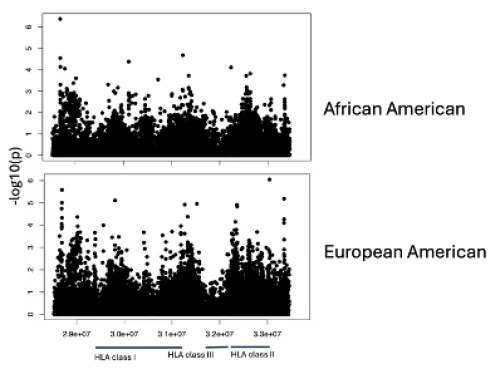Multiple sclerosis (MS) is a complex, neurodegenerative, autoimmune disease, which causes lesions in the white matter of the brain. While it is known to have many environmental and genetic risk factors, a comprehensive understanding of its disease mechanism has remained elusive. However, the major histocompatibility (MHC) region contains the strongest known genetic risk signal, HLA-DRB1*15:01. Recent work based on SNP genotyping array data has revealed that, in addition to HLA-DRB1*15:01, there are 31 other, independent MS association signals throughout the MHC. To better understand the genetic contribution of this region, we use novel sequencing and reference-free, de novo assembly methods developed by the lab to capture high-resolution sequence variation in the MHC from a large (n=~3,000) case/control cohort, comprised of both white and African American individuals. Though understudied, MS is prevalent in African American communities and this work will contribute important ancestry-informed MS risk information. To interpret and predict functional relevance of novel risk variants with respect to their role in MS pathogenesis, we perform both statistical and functional fine-mapped, using ATAC-seq and other molecular and in silico approaches.
